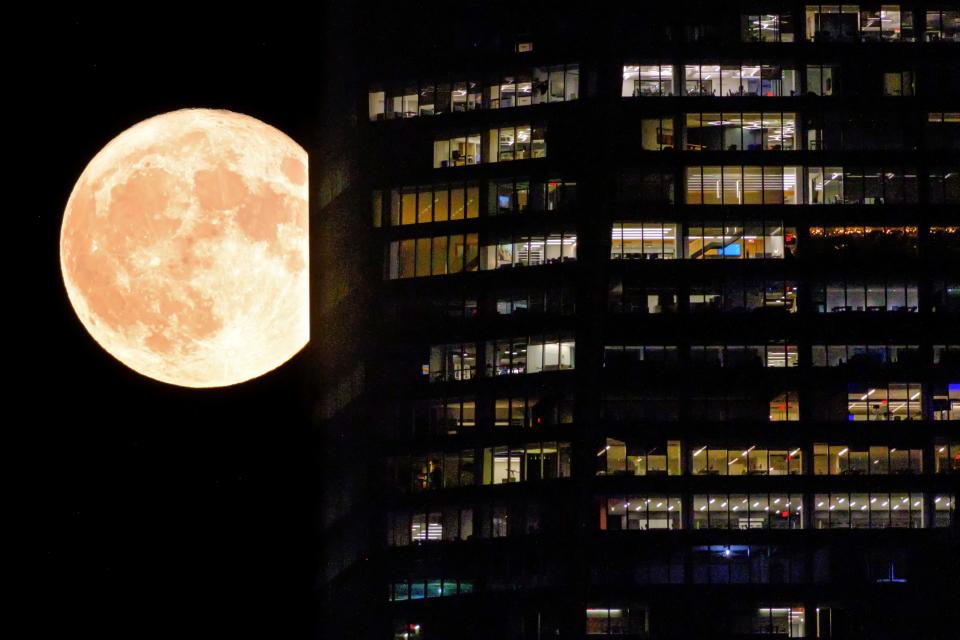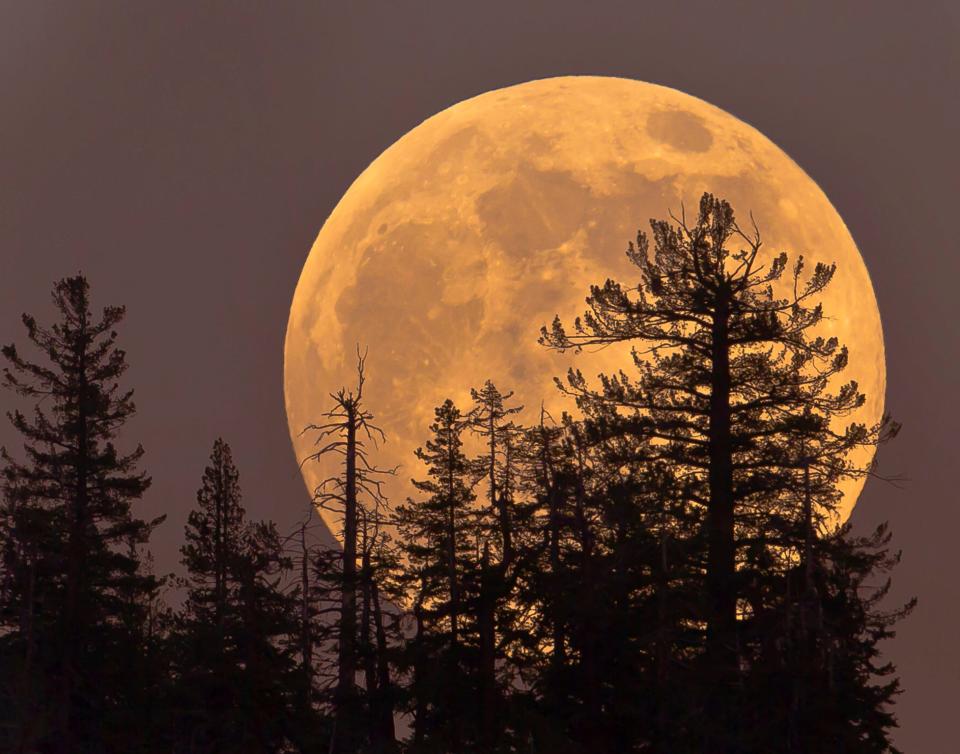Why tonight's "super blue moon" is unusual, and details on meteor showers over Utah
When the full moon rises over Utah tonight, it'll mark the second of the month and the first combination blue moon and "supermoon" of 2023.
August began with the eighth full moon of the year and the second of four supermoons, a full moon that appears brighter than normal due to being closer to Earth. That makes tonight's a rare combination of the two, and an easy sight for residents to take in thanks to the clear skies forecasted and the early evening hours when it should happen.
When is the next full moon?
The next full moon on Wednesday, Aug. 30, the ninth of the year, will be both a supermoon and blue moon.
What makes a supermoon unique?

There will be four supermoons in 2023, according to EarthSky.org.
The first supermoon came back on July 3, the second was on Aug. 1, and the next two will come on Wednesday, Aug. 30, and Friday, Sept. 29.
"A supermoon exceeds the disk size of an average-sized Moon by up to 8% and the brightness of an average-sized full Moon by some 16%," according to the Old Farmer's Almanac. "You may not perceive the difference in size, but a supermoon will appear brighter in the sky."
What makes a ‘blue moon’ unique?
Despite the name, blue moons are not blue in color. Blue moons are the second full moon of a month or the fifth full moon of a season.
No other month this year will have two full moons, so Aug. 30 will be the only blue moon of 2023. It is also the first super blue moon since December 2009. Peak illumination will be at 9:36 p.m. EDT.
If you want to catch it, you better mark your calendar to make sure you don’t forget. If you miss it, the next super blue moon will not reappear until August 2032.
When can I the next meteor shower?

For those who love meteor showers, the Perseids meteor shower peaked Aug. 13, but this annual occurrence remains active till Sept. 1.
"Perseids frequently leave long "wakes" of light and color behind them as they streak through Earth's atmosphere," according to NASA. "The Perseids are one of the most plentiful showers with about 50 to 100 meteors seen per hour."
Perseids also are known for their fireballs, which are larger explosions of light and color that can persist longer than an average meteor streak.
NASA says these are best viewed in the Northern Hemisphere during the predawn hours, though at times it is possible to view meteors from this shower as early as 10 p.m.
Contributing: USA TODAY.
This article originally appeared on St. George Spectrum & Daily News: When is the next full moon? Meteor showers can be seen now

